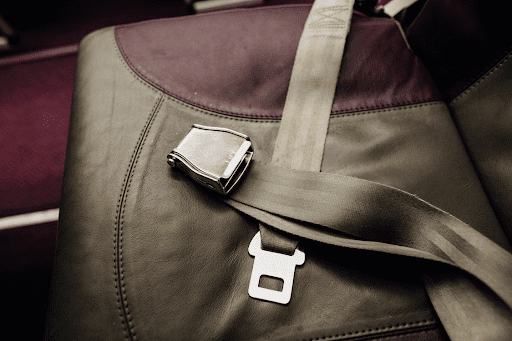Teaching teens to drive comes with its advantages. For starters, teenage drivers are likelier to gain more experience than those learning to drive as adults. Moreover, driving fosters independence, discipline, and responsibility, as they have to stay safe to preserve their lives. Parents can also benefit from this, as their teenage children can run errands or drive wherever they want. Despite these benefits, teenage drivers still face several risks while on the road. Here are a few and how they can be prevented.
1) Distracted driving
Admittedly, every driver is prone to be distracted while on the road. However, this risk is higher among teenagers. This is because they often engage in other activities instead of focusing on driving. And one of the common causes of distraction is using their mobile phones to text. While it might be tempting to respond quickly to a text, this means that their eyes are off the road for approximately five seconds. And this is enough time to collide with another vehicle or skid off the road. Some teen drivers also take selfies, face time, or use social media behind the wheel, so keep this in mind. Other causes of distracted driving include eating, reading, grooming, and emotional stress.
Fortunately, preventing distracted driving among teens is possible. Parents can achieve this by being role models. As a parent, you should practice what you preach to motivate your teens to do the same. You should avoid making calls or checking your phone when driving. Stopping your car at a safe place to eat, take calls, or perform other activities is also beneficial. You should also speak to them about the dangers of distracted driving, presenting facts and case studies. Consequently, implement your rules and sanctions regarding distracted driving. For instance, you can suspend your teen’s driving privileges or limit phone access if they break your rules.
2) Peer passengers
Another common risk teen drivers face is peer passengers. Indeed, teenagers are likelier to be affected by peer pressure, even on the road. This is because they wish to impress their peers and be labelled as “cool.” Various studies indicate that risky driving behaviour increases when multiple teenage passengers enter the vehicle. It’s also important to note that this is more common with male than female drivers. No wonder male drivers aged 27-24 account for most young driver fatalities in the UK. Therefore, it’s up to parents to ensure their teens aren’t being influenced by their friends.
To get started, familiarise yourself with, and apply the rules regarding the number of passengers your teen should have. You can also create your rules, so feel free to leverage this. For instance, limit the number of peer passengers to one or two when on the road. As a tip, run a background check on your teen’s friends to ensure they won’t encourage them to take risky driving behaviours. Again, let them face the consequences anytime they disregard your rules to ensure obedience.
3) Speeding

Brake research indicated that road traffic crashes are the leading cause of death among drivers aged 15-29 globally. And this is due to their inexperience in detecting hazardous situations and their zeal and overconfidence to engage in dangerous driving practices like overspeeding and overtaking. Likewise, they deem speeding as fun, often underestimating the increased likeliness of losing control of the steering or crashing into another vehicle with little reaction time. Therefore, parents need to get involved in their teen’s driving, closely monitoring them. This way, they are less likely to drive at insanely high speeds.
Since children learn from their parents, they can become role models by adhering to the speed limits. While at it, they can educate their teens on the importance of speed limits and the benefits of adhering to them. As a tip, don’t get them a new car immediately, as they are likelier to speed in their cars. Instead, encourage them to use the family car. And if you must get them their vehicles, consider larger options instead of high-performance vehicles.
4) Drink driving
Drink driving is operating a car or other vehicles after drinking excess alcohol. Admittedly, alcohol harms reasoning and judgement while diminishing the sense of coordination and balance. Moreover, it can cause an individual to lose concentration and impairs their hearing and vision. All these can slow down their reaction time, making them likelier to be involved in an accident. Seeing these dangers, avoiding alcohol is mandatory. However, it’s common for teens to drive while intoxicated. And this is due to their lack of knowledge; not all teens know the legal drink-drive limit, and they can’t even detect the warning signs of excess alcohol in their blood. Others also learn this harmful practice from their parents or guardians, so keep this in mind. Peer pressure is also a huge cause of drink-driving among teens.
Therefore, parents are encouraged to set rules against drinking. And this means implementing sanctions should they disregard the rules. You should also talk to them about the dangers of consuming alcohol before hitting the road. Again, presenting facts and case studies will be beneficial. While at it, inform them about legal actions they can face if caught driving while intoxicated. Offenders can face up to six months in jail, unlimited fines, and a driving ban. They can also face life imprisonment if a life is taken due to their actions, so keep this in mind.
5) Failure to use seat belts

Many teen drivers avoid wearing seat belts. Some believe that it makes driving uncomfortable and less cool. Others also postulate that they don’t need it when driving short distances. Some also think seat belts will trap them in the car during a crash, or the airbags are enough protection. However, these notions are far from the truth. Seat belts are important safety features and for good reasons. For starters, they keep you from moving around the place during a collision, reducing the impact and sparing you severe injuries. That said, seat belts are more likely to save their lives. Fortunately, parents can change their minds by setting an example. Parents should always wear seat belts when driving with their teens and encourage their kids to do the same.
Although driving risks are common among teens, they can be mitigated with the right tips. However, accidents can still happen when they don’t drive safely. Therefore, teaching your teen what to do in a car accident is crucial.



































